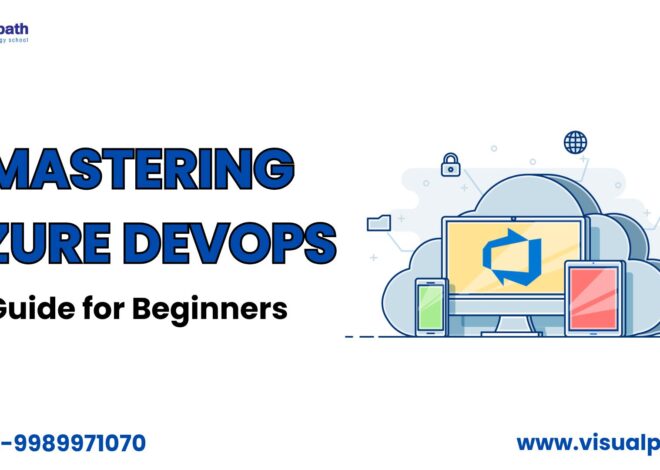
Azure DevOps -Top 18 interview questions along with their answers:
Basic Questions
- What is Azure DevOps?
Answer: Azure DevOps is a cloud service for collaborating on code development and deployment, providing a comprehensive suite of tools for CI/CD, version control, project management, and testing. Azure DevOps Training in Hyderabad
- What services are included in Azure DevOps?
Answer: Azure Repos, Azure Pipelines, Azure Boards, Azure Test Plans, and Azure Artifacts.
- What is CI/CD?
Answer: Continuous Integration (CI) is a development practice where developers integrate code into a shared repository frequently, each integration being verified by an automated build and tests. Continuous Deployment (CD) is the automated deployment of code changes to a production environment.
- What is Azure Repos?
Answer: Azure Repos provides Git repositories or Team Foundation Version Control (TFVC) for source control of your code. Azure DevOps Training Online
- What is Azure Pipelines?
Answer: Azure Pipelines is a cloud service that supports continuous integration and continuous delivery (CI/CD) to build, test, and deploy your code to any platform. Azure DevOps Training
- What are Azure Boards?
Answer: Azure Boards provides a set of Agile tools to support planning and tracking work, code defects, and issues using Kanban and Scrum methods.
- What is Azure Artifacts?
Answer: Azure Artifacts allows teams to share Maven, npm, NuGet, and Python package feeds from public and private sources. Microsoft Azure DevOps Online Training
- What is Azure Test Plans?
Answer: Azure Test Plans provides a browser-based test management solution for planning, executing, and tracking manual tests.
Intermediate Questions
- How do you set up a CI/CD pipeline in Azure DevOps?
Answer: By creating a new pipeline under Azure Pipelines, selecting your repository, configuring your build pipeline (using YAML or classic editor), and setting up deployment stages. Azure DevOps Course Online
- What is YAML?
Answer: YAML (YAML Ain’t Markup Language) is a human-readable data serialization standard that can be used to configure Azure Pipelines.
- How do you integrate Azure DevOps with GitHub?
Answer: You can integrate by linking your GitHub repository with Azure Pipelines, enabling builds, and deployments from Azure DevOps.
- What is a build agent in Azure Pipelines?
Answer: A build agent is an installable software component that runs one job at a time and is used to build your application.
- How can you manage secrets in Azure Pipelines?
Answer: Using Azure Key Vault, pipeline variables, and secrets management features in Azure DevOps.
- What is the difference between build and release pipelines?
Answer: Build pipelines are used to compile and test code, whereas release pipelines are used to deploy the application to various environments.
- How do you use Azure Boards for project management?
Answer: By creating work items, setting up boards and backlogs, using sprint planning, and tracking progress with dashboards and reports.
- How do you handle versioning in Azure Repos?
Answer: Using Git branching strategies like GitFlow, feature branches, and tagging. Azure DevOps Certification Online Training
- What is the use of artifacts in Azure Pipelines?
Answer: Artifacts are used to share data between jobs, stages, and even different pipelines by publishing and consuming build outputs.
- What are task groups in Azure Pipelines?
Answer: Task groups allow you to group a set of tasks into a single reusable task.
Visualpath is the Leading and Best Software Online Training Institute in Hyderabad. Avail complete Microsoft Fabric Online Training Worldwide. You will get the best course at an affordable cost.
Attend Free Demo
Call on – +91-9989971070
WhatsApp: https://www.whatsapp.com/catalog/917032290546/
Visit https://visualpath.in/Microsoft-Azure-DevOps-online-Training.html



